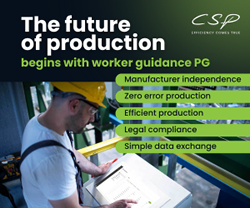Are EVs as Clean as They Seem?
NREL Scientists Advance Renewable Hydrogen Production Method
California ISO hits all-time peak of more than 97% renewables
NREL Calculates Lost Value of Landfilled Plastic in U.S.
The Role of AI in Developing Energy Efficiency
Why Does the Seafood Industry Want to Use Geothermal Energy?
Sinopec's First BIPV Carbon-Neutral Gas Station Powered By Solis
Wind Industry enjoyed its second-best year but scaling-up for Net Zero requires policy breakthrough
New biodiesel strains offer measurable gains
Scientists achieve record efficiency for ultra-thin solar panels
Offshore Wind Farms Could Interfere With Radars
Hanwha pledges commitment to build a fully American solar supply chain
How to clean solar panels without water
Scientists Show Large Impact of Controlling Humidity on Greenhouse Gas Emissions
Should More Land Be Dedicated to Renewable Energy?
Records 286 to 300 of 1030
First | Previous | Next | Last
Other Renewables - Featured Product

